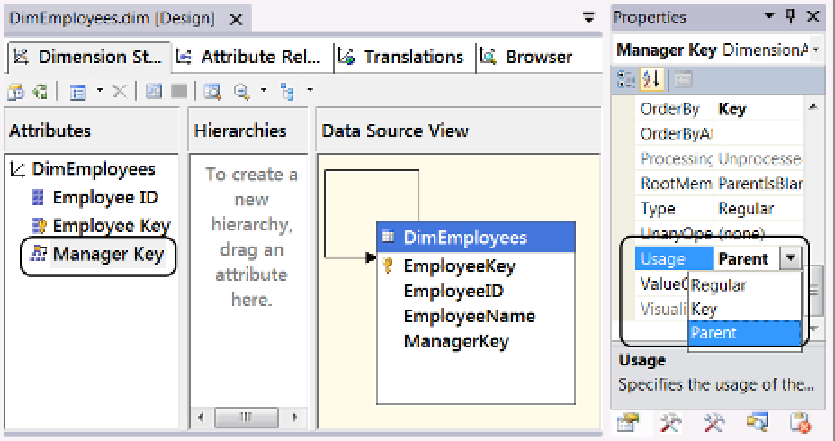Database Reference
In-Depth Information
Figure 12-28.
The data in the DimEmployees table
When you have a table with self-referencing columns like this, you can create a parent-child dimension from
it. An employee table is a classic example, but other examples exist such as tables that hold accounting data, such
as the DimAccount table in Microsoft's AdventureWorks data warehouse.
Whenever you create a new dimension table that is self-referenced in the data source view, the Dimension
Wizard automatically designs the dimension as a parent-child dimension. The most important property setting,
and the one that distinguishes the parent-child dimension from a normal dimension, is the Usage property of the
Parent attribute (Figure
12-29
).
In our example, the Parent attribute is the ManagerKey, whose Usage setting has been defined as Parent. The
most visual aspect of this setting is that the icon under the attribute list will change immediately to reflect that it is
now considered part of a hierarchy. This configuration defines whether a dimension is a parent-child dimension
or just a regular dimension.
Figure 12-29.
The DimEmployees dimension


